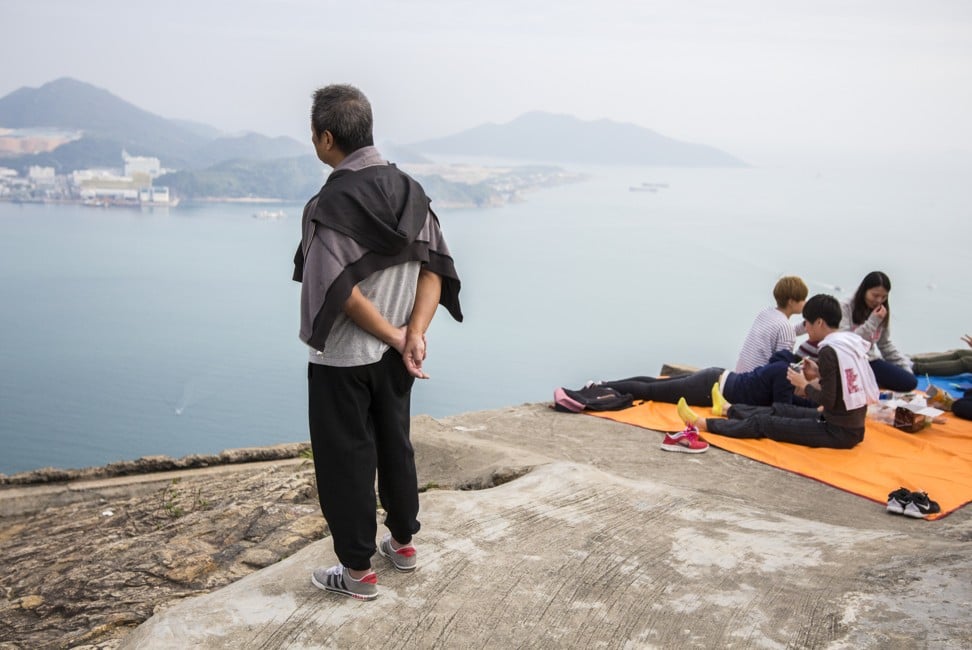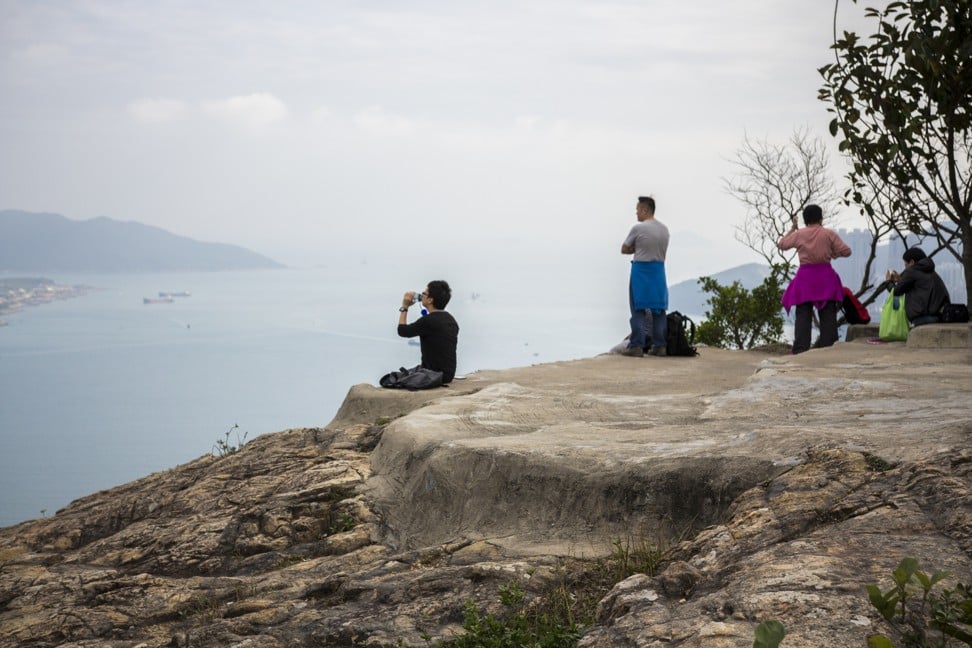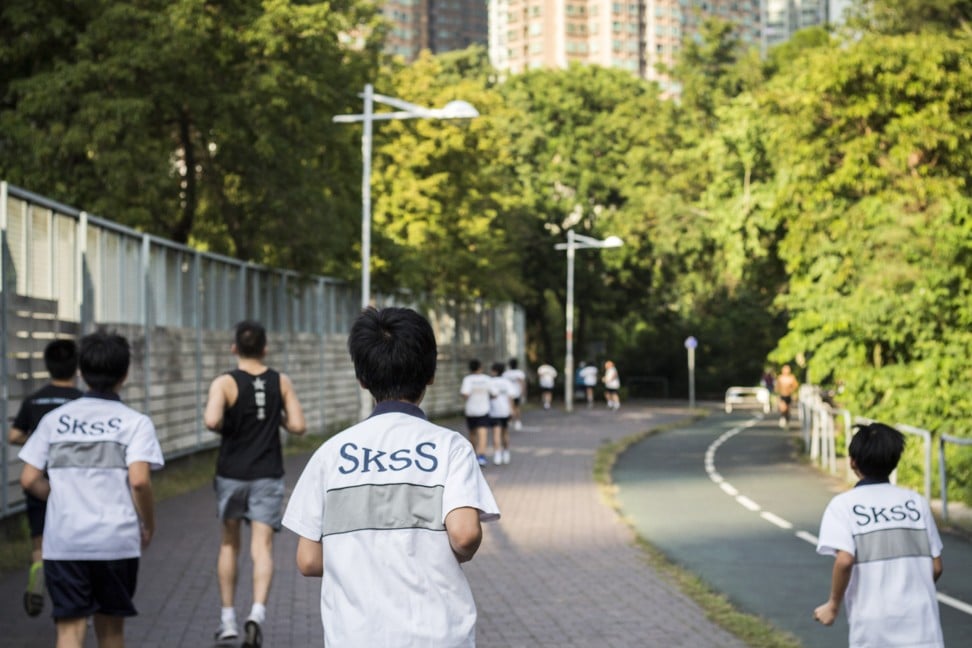
Once Hong Kong’s ‘Little Taiwan’, Tseung Kwan O has a rich history, hidden qualities – but is it still a little bland?
- Tseung Kwan O was once home to Kuomintang soldiers and Hong Kong’s first flour mill – which failed so badly, its owner gave rise to the naming of Tiu Keng Leng
- Today a growing waterfront promenade and cycle tracks connect to a ribbon of green spaces that thread through the entire district
Tseung Kwan O has a reputation for blandness – and it’s at least partly justified. Built on the shores of Junk Bay in the 1990s and 2000s, this high-rise bedroom community is where the late photographer Michael Wolf shot many of the images in his series “The Architecture of Density”, which evoked a sense of urban alienation.
Even for its residents, the suburb’s shopping malls and gated housing estates are hardly inspiring.
“It’s a rather ordinary commuter town,” says Maria Luk, who lived in the area, near Hang Hau MTR station, for more than a decade. Although the area’s public housing estates can be lively, most of it is dominated by private housing complexes built atop shopping malls, with little in the way of street life, cultural facilities or places to hang out without buying something.
“There was a lack of community ‘kaifong’ feeling,” says Luk. “We hardly ever saw our neighbours in 10 years. I wouldn’t recognise their faces even in the lift, but we made friends with the security guards and cleaning ladies.”

It wasn’t always that way. Luk grew up in nearby Sai Kung and remembers visiting Hang Hau Village when the nearby waterfront was being reclaimed for the housing estates that tower over the area today.
“The grocery store was run by an old uncle who had Dairy Farm red bean ices for us kids when mum went to buy dry goods and rice, scooped in bulk from giant wooden tubs,” she recalls. “The new TKO was completely different. It did not have that New Territories feeling.”
Into culture and art? Wong Chuk Hang is the place to be
Scratch the surface, though, and you’ll still find traces of that history. Even in the midst of the towers and malls, there are signs that Tseung Kwan O is finally becoming something more than just a place to sleep and shop.
Settlement resumed in the late 17th century and life remained pretty much the same for the next two centuries. People fished, raised livestock, cultivated tea and fended off the occasional pirate attack. Tseung Kwan O was one of several villages along Junk Bay, and by the late 19th century it was wealthy enough that one of its elders, Chan Tak-hang, was able to fund the construction of a guest house and pay for the maintenance of stone tracks that led to Kowloon.

Everything changed when Britain leased the New Territories in 1898. The new colonial rulers built a stone battery overlooking Junk Bay, on top of Devil’s Peak, to fend off a potential maritime attack by Russia. Down the hill, a Canadian man named Alfred Herbert Rennie hatched a plan to open Hong Kong’s first flour mill.
Rennie tried to hide the fact that he was going bankrupt by forging financial documents, but after his deception was revealed he drowned himself by jumping off a boat in Junk Bay. A rumour took hold that he had actually hanged himself in his mill, and Cantonese speakers began calling the surrounding area Diu Keng Leng – Hangman’s Ridge – although in English it was still politely known as Rennie’s Mill.

In 1950, the area acquired yet another moniker: Little Taiwan. When China’s civil war ended in 1949 with a Communist victory over the Nationalists, also known as the Kuomintang (KMT), a wave of refugees began pouring into Hong Kong. Among them were former KMT soldiers and officials and their families. They first settled on Mount Davis but British colonial officials relocated them to Rennie’s Mill.
By the 1960s, the area had become a thriving city home to 20,000 people living in whitewashed cottages that clung to the steep hillside. The Post described it as “our most flagrant flag-waving Nationalist outpost” with its own schools and clinics. There were shops and small factories, a ferry service to Central, and a steel mill along the waterfront.
The town also erupted into celebration every October 10 when residents marked the start of the uprising that ended Qing dynasty rule in 1911. “We had big carnivals and cultural shows and almost all took part,” a resident named Tang Hing-cheung told the Post.
Stairways to heaven: developers turn Hong Kong walk-ups luxe
In any case, they did not have the choice of staying. When the government laid out plans to reclaim Junk Bay for housing, they announced that Rennie’s Mill would be cleared. Most residents took the compensation offered by the government, but a handful of militants fought until the very end, clashing with riot police sent to guard demolition work in the summer of 1996.
Virtually nothing is left of the old Nationalist town, except for one small block of housing. Many former residents now live in the towers of Tseung Kwan O, where they were given public housing after 1996.

This is not the only community hiding in the shadows of the district’s high-rises. Two decades after Little Taiwan ceased to exist, there’s a new enclave emerging: Little France. At least, that is how journalist Patricia Herau-Yang described it in the pages of Le Petit Journal, Hong Kong’s French-language newspaper.
It all started when the French International School opened a sparkling new campus near Tiu Keng Leng MTR station (Diu Keng Leng was considered inauspicious, so it was changed to Tiu Keng Leng when the MTR opened in 2002).
When French expats visited the neighbourhood, says Herau-Yang, “they discovered the proximity of nature, wide streets with cycle paths, fresh air”. There is now a growing French community in the upscale developments that have sprouted along Tseung Kwan O’s new waterfront promenade.
“It’s just starting,” Herau-Yang says. “The first French restaurant, O Delice, opened in December. There’s a French bakery – although it’s run by Hongkongers, it’s pretty authentic nonetheless.” She expects the community to keep growing.

So, how do you escape the malls and discover these hidden corners of Tseung Kwan O?
A good way is to start at Yau Tong MTR station, which offers an easy walk up to Devil’s Peak, where the ruins of the Gough Battery offer a broad view of Junk Bay. From there, hiking trails lead down to the Junk Bay Cemetery, past which is a promenade that is gradually taking shape along the Tseung Kwan O waterfront, albeit to the sound and sight of massive ongoing development work that will eventually link the area to Lam Tin via tunnel.
Luxury housing to love hotels: the unusual history of Kowloon Tong
Eventually, the path leads to Duckling Hill, which bookends Tseung Kwan O, facing off against Devil’s Peak. Instead of a military relic, this hillside is where nearby residents have forged their own recreational space, building bamboo railings and shelters to complement the concrete facilities installed by the government.
Every morning, locals hit the slope to exercise, play games and enjoy the view of the towers below. Perhaps that is the lesson of Tseung Kwan O: there’s always life between the cracks. If people don’t have a community, they’ll make their own.

